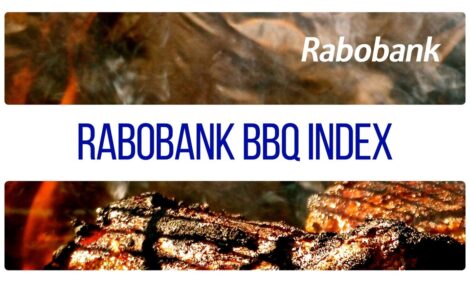



Researchers Show Benefits of Zinc Supplementation in Broilers
Discoloration of the meat was not associated with dietary zinc or copper supplementation in two studies at North Carolina State University although male broiler performance was improved by an additional 200mg per kg zinc. Redness of the bone marrow was associated with zinc supplementation.Red discolouration of fully cooked poultry products is a sporadic yet chronic problem. Zinc has been reported to replace iron in myoglobin in an irreversible reaction that creates a red pigment. Many poultry producers add zinc and copper to feed, sometimes over supplementing 50 to 200 per cent because these minerals are important for broiler performance, according to Dr Doug Smith, Dr John Brake and Rasha Qudsieh of the Department of Poultry Science at North Carolina State University.
This project – sponsored by the US Poultry & Egg Association – evaluated whether zinc or copper in broiler feed at normal or high levels caused an increase of red discolouration in cooked product.
Two studies were conducted on broilers to determine:
- the effect of feeding different levels of inorganic dietary zinc, copper and roxarsone on growth performance, carcass and meat quality and blood zinc protoporphyrin:heme ratio (ZPP:H), and
- the effect of adding high levels of inorganic dietary zinc on growth performance, carcass and meat quality, and blood ZPP:H ratio.
In the first study 1,152 broilers were sexed and grown in 72 pens by sex and treatment (varied dietary levels of zinc, copper and As) to 56 days on litter.
Results of the first study showed that males in comparison to females had increased bodyweight, bodyweight gain, feed intake and adjusted feed conversion ratio (AdjFCR); however, females had lower mortality. Supplementation of 240mg per kg zinc improved AdjFCR in the starter period in males and grower period in females. Supplementation of 100mg per kg copper was beneficial for both males and females in the grower and finisher periods. Roxarsone supplementation improved AdjFCR only in the finisher period. Minerals did not increase muscle redness.
In the second study, 288 broilers were sexed and raised to 42 days in battery cages (to minimise availability of minerals from litter).
Dietary zinc had no effect on feed intake of males, however, bodyweight gain and AdjFCR measured from days 1 to 42 was better in males fed diets supplemented with 120mg per kg zinc. Dietary zinc had no effect on bodyweight, feed intake, body weight gain or AdjFCR of females.
Dietary zinc had no effect on carcass weight and parts yield, however, breast fillet weights were improved in males when zinc was added to the diets.
Breast fillet cook yield and tenderness were not influenced by either sex or zinc.
Raw breast fillet colour was influenced by sex. Breast fillets from males were darker, redder and contained less yellow colour.
Raw thigh colour was also lighter and less yellow in males than females.
Raw marrow colour measured immediately after harvest was more red and yellow in females.
Lightness (L*) and redness (a*) of raw and cooked bone marrow collected from males was influenced by zinc. L* was higher at 120mg per zinc for both raw and cooked marrow, while a* of cooked marrow was higher at 240mg per kg zinc.
Dietary zinc had no effect on the measured ZPP:H ratio except at 28 days, when it tended to be lower at 120mg per kg zinc. Females had higher ratios at one, seven and 42 days.
Smith and colleagues concluded their results indicate that under the current experimental conditions, supplementing high levels of dietary zinc did not further enhance performance of broiler females while 120mg per kg zinc improved performance in males.
Also, supplementing 120 and 240mg per kg zinc improved breast tender size and increased marrow redness.
Iron levels in the body, diet and litter could have been sufficient to prevent replacement of zinc in the myoglobin and haemoglobin, the Raleigh-based researchers suggested. They added that it is also possible that levels of myoglobin and haemoglobin in chicken breast and thigh are not high enough to result in a clear effect. However, the increase in marrow redness from zinc does show the possibility that muscle in contact with bones could be affected with higher redness values.
July 2014








